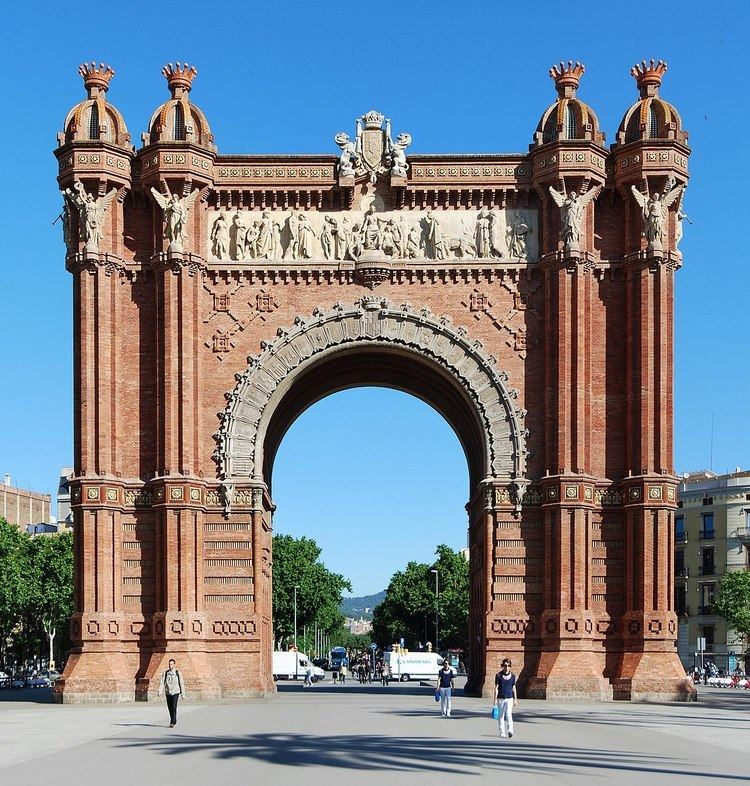Year 1888 (1888) | Type Brick, stone | |
 | ||
Dimensions 29.8 m × 27.7 m × 12.4 m (98 ft × 91 ft × 41 ft) Artists Josep Llimona i Bruguera, Manuel Fuxà, Josep Reynés, Torquat Tasso i Nadal, Antoni Vilanova, Pere Carbonell i Huguet Address Passeig de Lluís Companys, 08003 Barcelona, Spain Hours Open today · Open 24 hoursTuesdayOpen 24 hoursWednesdayOpen 24 hoursThursdayOpen 24 hoursFridayOpen 24 hoursSaturdayOpen 24 hoursSundayOpen 24 hoursMondayOpen 24 hours Similar Parc de la Ciutadella, Plaça de Catalunya, Casa Batlló, Columbus Monument - Barcelona, Santa Maria del Mar - Barc | ||
The Arc de Triomf ([ˈark də tɾiˈomf]) or Arco de Triunfo in spanish, is a triumphal arch in the city of Barcelona in Catalonia, Spain. It was built, by architect Josep Vilaseca i Casanovas, as the main access gate for the 1888 Barcelona World Fair. The arch crosses over the wide central promenade of the Passeig de Lluís Companys, leading to the Ciutadella Park that now occupies the site of the world fair. It is located at the northern end of the promenade, facing the Passeig de Sant Joan.
The arch is built in reddish brickwork in the Neo-Mudéjar style. The front frieze contains the stone sculpture Barcelona rep les nacions (Catalan for "Barcelona welcomes the nations") by Josep Reynés. The opposite frieze contains a stone carving entitled Recompensa ("Recompense"), a work from Josep Llimona's earliest period, representing the granting of awards to the participants in the World Exposition. The friezes along the sides of the arch include allegories of agriculture and industry by Antoni Vilanova and of trade and art by Torquat Tassó.
Similar structures can be found in many other cities, most notably including the Arc de Triomphe in Paris, the Wellington Arch in London, the Soldiers' and Sailors' Arch in New York City, and the Arcul de Triumf in Bucharest.
